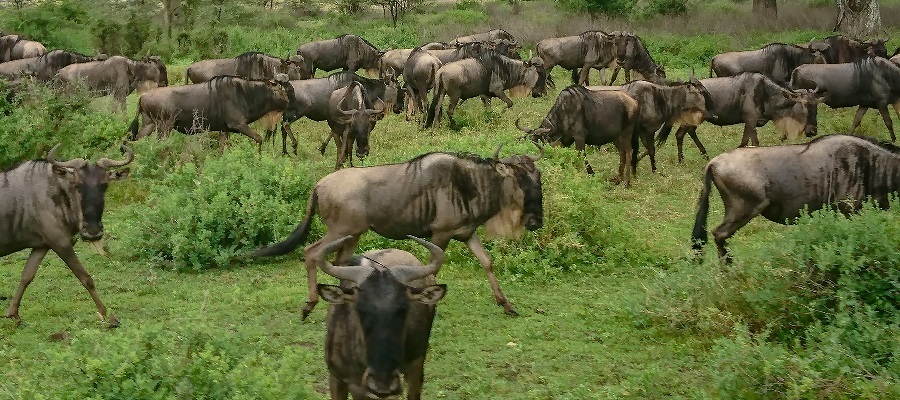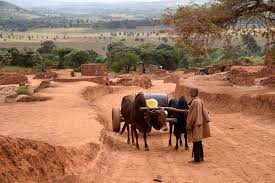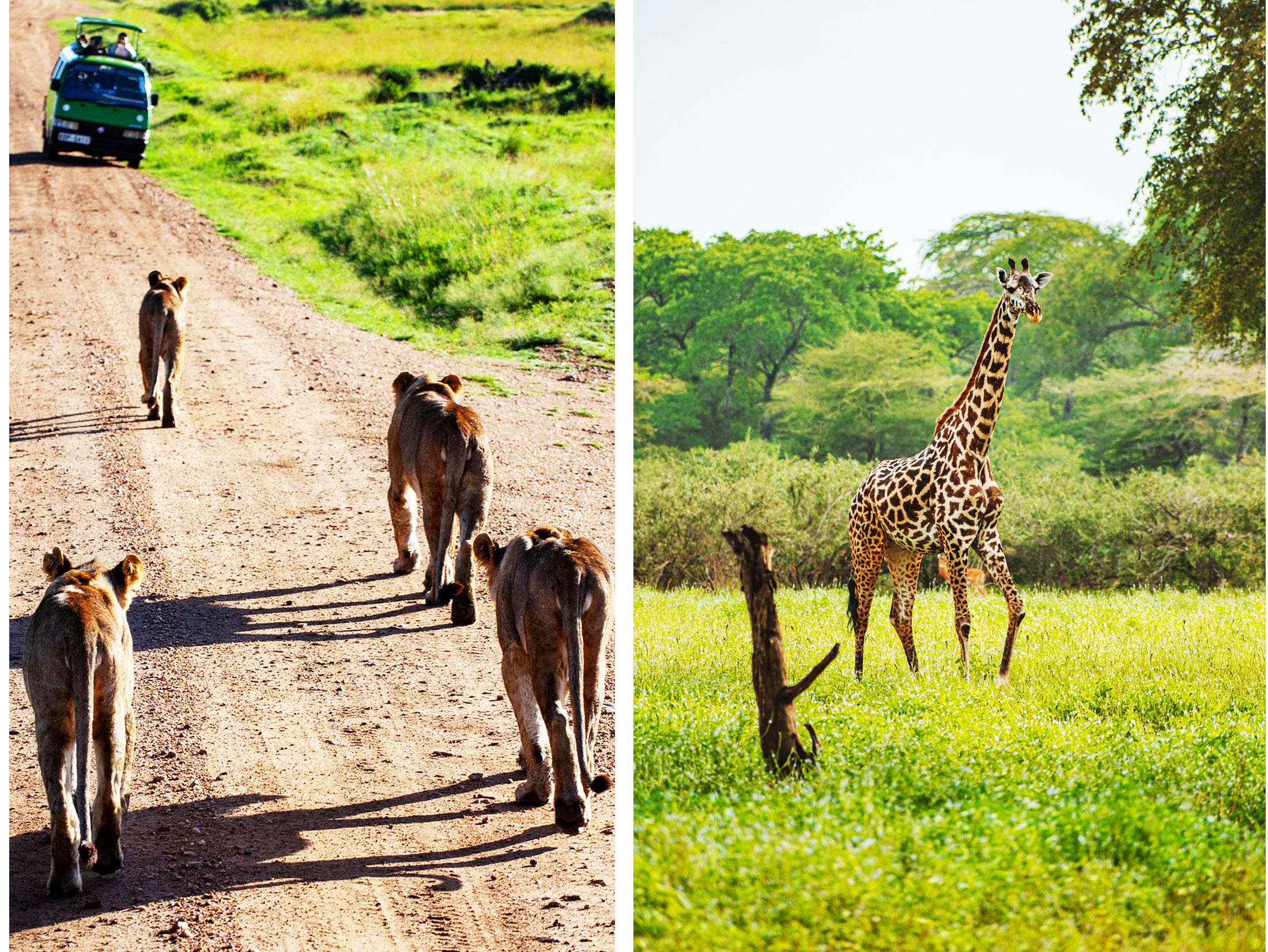
Things to Do in Karatu (2026-2027) | Karatu Activities & Attractions
Karatu, located in northern Tanzania, is a lively town often regarded as the gateway to the Ngorongoro Conservation Area. The region is blessed with breathtaking landscapes, unique cultural experiences, and easy access to some of Africa’s most famous national parks. For travelers planning to visit in 2026-2027, Karatu provides more than just a convenient base; it offers a blend of safari adventures, cultural immersion, and outdoor activities. Whether your interests lie in spotting wildlife, learning about local traditions, or enjoying thrilling activities such as hot air balloon rides, Karatu has something memorable for every visitor. The area combines rich natural beauty with the warmth of Tanzanian hospitality, ensuring that your journey will be both enriching and unforgettable.
Are you planning a journey to northern Tanzania in 2026-2027? Karatu is the perfect destination to base yourself, offering both adventure and cultural richness. Are you interested in world-class safaris? The town is the gateway to Ngorongoro Crater, Lake Manyara, Tarangire, and even the Serengeti. Are you curious about culture? Karatu provides authentic encounters with local communities, coffee farms, and traditional villages. Are you passionate about nature? Scenic hikes and eco-friendly activities await in the surrounding highlands. Are you seeking unique thrills? From hot air balloon rides to cycling tours, the options are diverse. Are you a traveler who values both comfort and discovery? Karatu’s lodges blend relaxation with local charm. Are you ready for a destination that combines wildlife, culture, and unforgettable landscapes? Karatu in 2026-2027 is more than a stopover—it is an experience in itself.
Safari & Wildlife Viewing
One of Karatu’s biggest attractions is its close proximity to world-renowned safari destinations. Just a short drive away lies the Ngorongoro Crater, a natural wonder formed by an ancient volcanic eruption. Inside the crater, visitors can spot the legendary Big Five lion, elephant, buffalo, leopard, and rhinoceros making it a highlight for wildlife enthusiasts. Lake Manyara National Park is another gem, famous for its tree-climbing lions, large elephant herds, and flamingo-filled lakeshores. Tarangire National Park provides a different experience with its vast landscapes, iconic baobab trees, and impressive elephant populations that roam freely. For those seeking the ultimate safari adventure, the Serengeti National Park offers the chance to witness the Great Migration, a once-in-a-lifetime spectacle of wildebeest and zebra moving across the plains. Each park near Karatu offers a unique perspective of Tanzania’s wildlife and ecosystems, ensuring unforgettable safari memories.

Ngorongoro Crater
From Karatu, one of the most remarkable experiences is a safari to the Ngorongoro Crater, often described as the “Eighth Wonder of the World.” This ancient volcanic caldera has a unique ecosystem that supports an extraordinary concentration of wildlife. Game drives on its vast floor allow visitors to encounter the Big Five lion, elephant, buffalo, leopard, and rhinoceros—in a single day, something that is rare in many parts of Africa. The crater’s grasslands, forests, and soda lakes also provide habitats for wildebeest, zebras, hippos, and flamingos. Beyond the wildlife, the stunning scenery, with steep crater walls rising dramatically in the background, makes every moment picturesque. Being just a short drive from Karatu, it is one of the most accessible and rewarding safari destinations in Tanzania. For 2026-2027, Ngorongoro remains a must-see highlight for any traveler staying in Karatu.
Lake Manyara National Park
Lake Manyara National Park is another nearby attraction easily accessible from Karatu, offering a different safari experience from Ngorongoro. The park is famous for its tree-climbing lions, a rare behavior that fascinates wildlife enthusiasts and photographers. Large herds of elephants roam its lush forests and open plains, while the alkaline lake itself hosts thousands of flamingos, pelicans, and other bird species, making it a paradise for birdwatchers. The park’s diverse landscapes range from dense woodlands to grassy floodplains and hot springs, providing unique ecological contrasts within a relatively small area. Visitors can enjoy half-day or full-day safaris, making it ideal for those with limited time. The proximity to Karatu means it is possible to combine a visit to Lake Manyara with other cultural or nature activities in the region. For travelers in 2026-2027, this park will continue to offer unforgettable opportunities for wildlife viewing and photography.
Tarangire National Park
For travelers basing themselves in Karatu, Tarangire National Park offers an excellent option for day safaris. Known for its iconic baobab trees and vast elephant populations, Tarangire has a distinctive charm that sets it apart from other northern Tanzanian parks. During the dry season, the Tarangire River becomes a lifeline for animals, attracting huge herds of elephants, buffaloes, wildebeests, and antelopes, as well as predators like lions and leopards. The birdlife here is equally spectacular, with over 400 recorded species. The park’s wide-open landscapes, dotted with ancient baobabs, provide dramatic backdrops for photography and create a sense of timeless African wilderness. Its relative quietness compared to the Serengeti or Ngorongoro makes it appealing to travelers seeking less crowded safari experiences. Only a short drive from Karatu, Tarangire is a perfect inclusion for itineraries in 2026-2027, offering both adventure and tranquility.
Serengeti National Park
While slightly farther from Karatu than the other parks, the Serengeti remains one of the greatest safari destinations on earth. It is world-renowned for the Great Migration, where over a million wildebeest and hundreds of thousands of zebras and gazelles move in search of fresh grazing lands. Depending on the time of year, visitors from Karatu can travel into the Serengeti to witness this awe-inspiring event, whether it’s the calving season in the south or dramatic river crossings in the north. Beyond the migration, the Serengeti offers incredible year-round wildlife viewing, with abundant predators like lions, cheetahs, and hyenas patrolling the endless plains. The vast open landscapes give the park a cinematic quality, where every game drive feels like an adventure unfolding in real time. For visitors staying in Karatu during 2026-2027, combining a trip to the Serengeti with nearby parks ensures a complete and unforgettable safari experience.
Cultural & Nature Experiences
Karatu is not only about wildlife but also about immersing yourself in the daily lives and traditions of local communities. Coffee lovers can visit estates such as Gibb’s Farm or Ngorongoro Coffee Lodge, where they learn the entire process of coffee production, from bean to cup, while walking through scenic plantations. Guided hikes through the highlands surrounding Karatu provide opportunities to explore forests, rolling hills, and farms, with sweeping views of the Great Rift Valley. A journey to Lake Eyasi introduces visitors to the Wahadzabe hunter-gatherers, one of the last remaining indigenous groups in Tanzania, who still live by traditional practices such as hunting with bows and gathering wild foods. In Marera Village, travelers can engage with local markets, meet artisans, and experience vibrant cultural expressions through art and crafts. These experiences create meaningful connections with people and nature, giving travelers a deeper appreciation of the region.

Coffee Plantations
Karatu’s fertile soils and cool climate make it one of Tanzania’s most productive coffee-growing regions. Visitors can take guided tours of estates such as Gibb’s Farm and Ngorongoro Coffee Lodge, where they walk through scenic plantations surrounded by lush greenery. These tours reveal every stage of the coffee-making process, from harvesting ripe cherries to roasting and brewing the beans. Guests also get the chance to sample freshly brewed local coffee, considered among the best in East Africa. Beyond the beverage itself, the tours highlight the history of coffee in Tanzania and its role in supporting local livelihoods. Many estates also feature beautiful gardens, art studios, and farm-to-table dining, making the experience enriching and relaxing. For travelers in 2026-2027, exploring coffee plantations in Karatu is both educational and enjoyable, combining agriculture, culture, and hospitality.
Nature Hikes
For those seeking outdoor adventure beyond safaris, Karatu offers excellent opportunities for guided nature hikes. The highlands surrounding the town are rich in natural beauty, with rolling hills, dense forests, waterfalls, and farmland landscapes waiting to be explored. Guided hikes often pass through coffee plantations, villages, and scenic trails that provide stunning views of the Great Rift Valley. Along the way, hikers may encounter diverse flora and fauna, including colorful birds and native plant species. These hikes not only offer exercise and fresh air but also provide a deeper connection to the land and people of Karatu. Local guides share stories about traditional farming methods, cultural practices, and the natural environment, adding meaning to the journey. By 2026-2027, hiking will remain one of the best ways to appreciate Karatu’s environment in a personal and sustainable way.
Lake Eyasi
A visit to Lake Eyasi, located southwest of Karatu, introduces travelers to an entirely different cultural experience. This shallow soda lake lies in a remote area where the Hadza (Wahadzabe) hunter-gatherers still maintain their traditional way of life. Visitors have the rare opportunity to join the Hadza on morning hunts using handmade bows and arrows, learning firsthand about their ancient survival skills. The community also shares stories about their customs, language, and deep connection to nature. In addition, visitors may meet the Datoga people, skilled blacksmiths who craft jewelry and tools from recycled metals. The area’s landscapes are striking, with palm-lined shores, seasonal birdlife, and dramatic sunsets over the lake. For travelers in 2026-2027, Lake Eyasi offers a once-in-a-lifetime chance to connect with Tanzania’s indigenous cultures while enjoying raw natural beauty.
Marera Village
Just outside Karatu lies Marera Village, a vibrant community where visitors can immerse themselves in authentic local life. The village is known for its colorful markets, where fresh produce, crafts, and handmade goods are sold in lively settings. Travelers can also visit small galleries and workshops showcasing the art and creativity of local artisans, including paintings, carvings, and beadwork. Walking through the village provides insight into daily routines, traditional farming, and the friendly spirit of Tanzanian hospitality. Cultural tours often include stops at schools, women’s cooperatives, or community projects, highlighting the importance of sustainable development. The experience is interactive, as visitors are encouraged to participate in cooking demonstrations, storytelling, or traditional dances. For 2026-2027, Marera Village promises to be a meaningful stop for travelers looking to connect with people and culture beyond the safari.
Unique Activities
Beyond traditional safaris and cultural tours, Karatu offers unique activities that make your visit truly unforgettable. Hot air balloon rides provide a spectacular bird’s-eye view of the Great Rift Valley, its lush landscapes, and roaming wildlife a breathtaking experience ideal for photographers and adventurers alike. For those who prefer ground-level exploration, guided cycling tours allow visitors to traverse scenic trails through farmlands, villages, and forests, combining fitness with discovery. Food tours are another exciting option, where guests sample local Tanzanian dishes, interact with chefs, and learn about traditional cooking techniques. These activities go beyond sightseeing and allow travelers to actively engage with the environment and community. Whether soaring in the sky or pedaling through the countryside, each experience adds a sense of adventure and personalization to your stay in Karatu.

Hot Air Balloon Rides
For a truly unforgettable perspective of Karatu and its surroundings, visitors can take part in hot air balloon rides over the Great Rift Valley and nearby parks. Floating gently above the landscape, travelers are treated to panoramic views of rolling hills, wildlife-filled plains, and scattered villages below. Early morning flights are particularly magical, with golden sunrise light casting dramatic shadows across the terrain. From above, elephants, giraffes, and other animals can often be spotted moving through their natural habitats. This experience combines adventure, photography, and tranquility in a way that few activities can. After landing, many operators include a celebratory breakfast in the bush, adding to the romance of the journey. For 2026-2027, hot air ballooning in Karatu and nearby regions promises to be one of the most exclusive and memorable highlights of any trip.
Food Tours
Food tours in Karatu allow visitors to connect with local culture through taste and tradition. Guided experiences often start in bustling village markets, where travelers discover colorful produce, aromatic spices, and fresh ingredients used in everyday Tanzanian cooking. Guests are then invited into local kitchens or restaurants to learn how to prepare signature dishes such as ugali, nyama choma (grilled meat), and vegetarian stews. Alongside the meals, visitors can sample fresh fruit juices, local beers, and of course, Karatu’s famous coffee. These tours go beyond food—they are opportunities to share stories, laugh with hosts, and understand the role of cuisine in community life. For those with a passion for culinary discovery, food tours provide a deliciously authentic slice of Tanzanian culture. In 2026-2027, they remain a must-try activity for anyone who wants to eat like a local while exploring Karatu.
Cycling Tours
Cycling tours are an exciting way to explore Karatu’s scenic landscapes while staying active and adventurous. Guided routes lead travelers through farmlands, coffee plantations, and quiet villages, offering a close-up view of rural life. The rides are designed for different fitness levels, ranging from leisurely paths suitable for families to more challenging trails for experienced riders. Along the way, cyclists often stop to interact with local farmers, visit schools, or simply enjoy the breathtaking views of the Great Rift Valley. The slower pace of cycling allows for deeper appreciation of the land, from birdwatching to spotting small wildlife. Many tours include cultural stops, blending physical activity with meaningful encounters. By choosing cycling, visitors also support eco-friendly travel and reduce their footprint. For 2026-2027, biking through Karatu remains an ideal option for travelers who want both adventure and authenticity.
Planning Your Trip
Successful travel in Karatu requires thoughtful planning to make the most of its diverse attractions. The best time to visit is during the dry season, from late June to October, when wildlife viewing is at its peak and roads are most accessible. During this period, travelers also stand the best chance of witnessing the Great Migration in the nearby Serengeti. Accommodation options are plentiful, ranging from luxury lodges like The Retreat at Ngorongoro to cozy mid-range choices such as Karatu Villas Lodge, all offering warm hospitality. Booking with professional guides and reputable safari operators ensures safe, educational, and immersive experiences in both wildlife and cultural tours. Travelers should also plan to spend at least a few days in Karatu itself to balance safaris with cultural and outdoor activities. By combining proper timing, accommodation, and guided experiences, Karatu in 2026-2027 becomes not just a stopover, but a destination of its own.
To make the most of your journey to Karatu, a few planning considerations are essential. The best time to visit is during the dry season, from late June to October, when wildlife viewing is at its peak and the Great Migration can be witnessed in nearby Serengeti. Accommodation options are plentiful, ranging from luxury lodges such as The Retreat at Ngorongoro to comfortable boutique stays like Karatu Villas Lodge, ensuring that every traveler finds something suitable. Professional guides play a crucial role in enhancing the safari and cultural experience, offering not only safe travel but also rich insights into the region’s history, wildlife, and traditions. Travelers are encouraged to book tours with reputable operators who provide responsible and high-quality services. With the right planning, Karatu becomes more than a stopover—it transforms into a destination where adventure, culture, and natural beauty come together seamlessly.

Best Time to Visit
Timing is one of the most important factors in planning a successful trip to Karatu. The dry season, which runs from late June to October, is considered the ideal period for safaris and cultural exploration. During this time, wildlife is easier to spot as animals gather near water sources, making game drives especially rewarding. The weather is cooler and clearer, providing excellent conditions for hiking, cycling, and outdoor photography. This season also coincides with key moments of the Great Migration in the Serengeti, offering visitors the chance to witness one of nature’s greatest spectacles. While Karatu can be visited year-round, the wet season may bring challenges such as muddy roads and scattered wildlife. For travelers in 2026-2027, visiting during the dry months ensures a smoother journey and the best possible safari experiences.
Accommodation
Karatu offers a wide variety of accommodation options that cater to different tastes and budgets, making it a comfortable base for safari adventures. Luxury seekers can enjoy elegant lodges such as The Retreat at Ngorongoro, which features spacious suites, fine dining, and breathtaking views of the surrounding highlands. Mid-range travelers will find cozy boutique options like Karatu Villas Lodge, combining comfort with local charm. Many lodges are set within coffee plantations or gardens, creating peaceful atmospheres for relaxation after a long day of exploration. Guests can also expect warm Tanzanian hospitality, with staff eager to share local stories and traditions. Some lodges offer cultural programs, cooking demonstrations, and guided nature walks, adding value to your stay. Whether you prefer luxury, mid-range, or more budget-friendly options, Karatu’s accommodation scene in 2026-2027 will meet your needs while keeping you close to top attractions.
Professional Guides
Hiring professional guides is essential for getting the most out of a trip to Karatu and its surrounding parks. Experienced guides bring safaris to life by spotting wildlife that visitors might otherwise miss and sharing detailed knowledge about animal behavior, ecosystems, and local culture. On cultural tours, they act as bridges between travelers and communities, ensuring respectful and meaningful interactions. Reputable safari operators also provide well-maintained vehicles, ensuring comfort and safety during long drives through national parks. Booking with professionals guarantees that logistics such as park entry, timing, and itineraries are handled smoothly, allowing travelers to focus fully on the experience. Many guides are multilingual, making them accessible to visitors from around the world. For 2026-2027, choosing knowledgeable and ethical guides ensures that every safari and cultural tour in Karatu becomes an enriching adventure filled with discovery.




